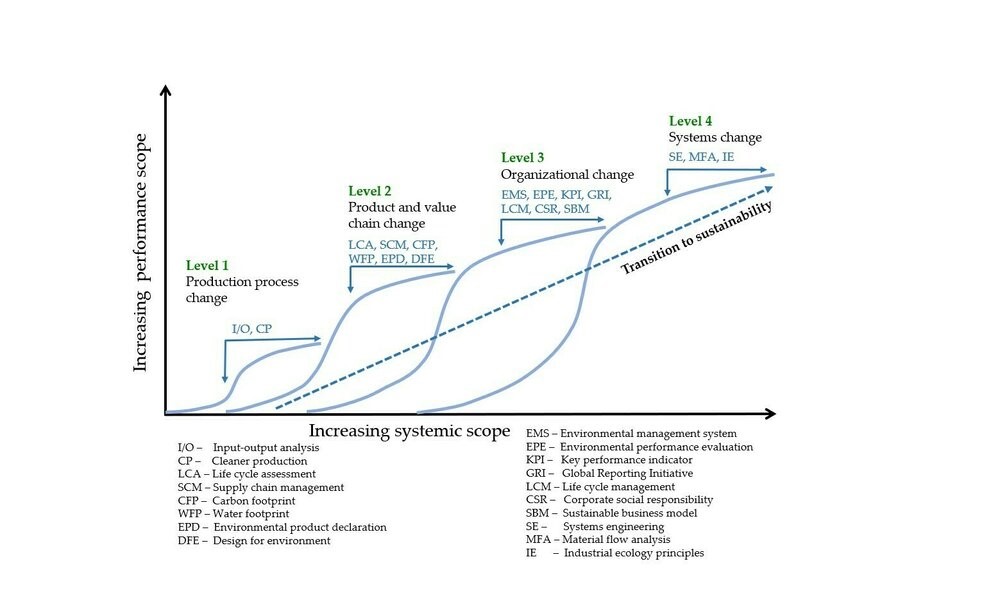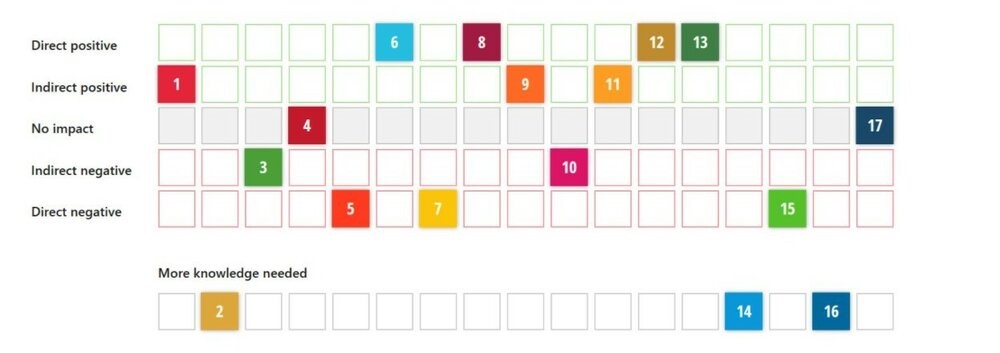Capacity building in Sustainability and Environmental Management
Capacity building in Sustainability and Environmental Management
Capacity building in Sustainability and Environmental Management
The CapSEM-model: A stepwise model of methods and tools for improving business sustainability

SDG Compass - The guide for business action on the SDGs

The SDG Compass is a five step framework created by the Global Reporting Initiative (GRI), United Nations Global Compact and the World Business Council for Sustainable Development (WBCSD). By developing and delivering solutions for the achievement of the SDGs, companies can discover new growth opportunities and lower their risk profiles. Companies can use the SDGs as an overarching framework to shape, steer, communicate and report their strategies, goals and activities, allowing them to capitalize on a range of benefits.
These include:
1. Identifying future business opportunities
The SDGs aim to redirect global public and private investment flows towards the challenges they represent. This will further grow markets and ease access to capital for companies that can offer relevant technologies and solutions through sustainable and inclusive business models.
- Innovative technologies to increase energy efficiency, renewable energy, energy storage, ‘green buildings’ and sustainable transportation;
- The substitution of traditionally manufactured and processed products by ICT and other technology solutions that reduce emissions and waste;
- Meeting the needs of the large and mostly untapped market for products and services – including in healthcare, education, energy, finance and ICT – that can improve the lives of the four billion people who currently live in poverty.
2. Enhancing the value of corporate sustainability
By integrating sustainability considerations across the value chain, companies can protect and create value for themselves by, for example, increasing sales, developing new market segments, strengthening the brand, improving operational efficiency, stimulating product innovation and reducing employee turnover
3. Strengthening stakeholder relations and keeping pace with policy developments
The SDGs reflect stakeholder expectations as well as future policy direction at the international, national and regional levels. Companies that align their priorities with the SDGs can better engage with customers, employees and other stakeholders, with those that don’t being exposed to growing legal and reputational risks. Companies that help advance the SDGs will be likely to:
- Improve trust among stakeholders;
- Strengthen their license to operate;
- Reduce legal, reputational and other business risks;
- Build resilience to costs or requirements imposed by future legislation.
4. Stabilizing societies and markets
Business cannot succeed in societies that fail. Investing in the achievement of the SDGs supports pillars of business success. Successful implementation of the SDGs will help to:
- Lift billions of people out of poverty, thereby growing consumer markets around the world;
- Strengthen education, thereby fostering more skilled and engaged employees;
- Make progress on gender equality and women empowerment, thereby creating a ‘virtual emerging market’ equivalent in size and purchasing power to that of China’s andIndia’s populations;
- Ensure that the global economy operates safely within the capacity of the planet to supply essential resources such as water, fertile soil, metals and minerals, thereby sustaining the natural resources that companies depend on for production;
- Foster accountable and well-governed institutions as well as open and rule-based trading and financial systems, thereby reducing the costs and risks of doing business.
5. Using a common language and shared purpose
The SDGs define a common framework of action and language that will help companies communicate more consistently and effectively with stakeholders about their impact and performance. Because they provide a unified sense of priorities and purpose across all dimensions of sustainable development, the SDGs may also assist in the creation of more effective partnerships with governments, civil society organizations and other companies.
See the SDG Compass website for more information and business tools and indicators databases to help measure & track your progress

The SDG Impact Assessment Tool
Results from SDG Impact Assessment.
What is the SDG Impact Assessment Tool, and what does it do?
The SDG Impact Assessment Tool was developed by Gothenburg Centre for Sustainable Development, at Chalmers University of Technology and University of Gothenburg, in collaboration with SDSN Northern Europe and Mistra Carbon Exit, and with financial support from Region Västra Götaland through the Maritime Cluster of West Sweden.
The SDG Impact Assessment Tool is an online learning tool that showcases how organization activities or new innovations impacts the SDGs. The tool aims to provide the user with a better understanding of the complexity of sustainable development and the different aspects of the SDGs. Ultimately, the tool may be a useful for decision-making support, and enable companies and decision-makers to make better and more holistic decisions with regards to sustainability.
The tool is developed for researchers, teachers, companies, agencies, civil organisations or by anyone who has a project or a solution to assess. All data connected to the SDG Impact Assessments are stored encrypted on Microsoft Azure servers. If a user account is deleted, the data becomes anonymized and can no longer be retrieved.
Using SDG Impact Assessment Tool
All data connected to the SDG Impact Assessments are stored encrypted on Microsoft Azure servers. If a user account is deleted, the data becomes anonymized and can no longer be retrieved.
The assessment can be used for decision-making support, but is not a scientific verification nor evidence of SDG impact of an activity or organisation. As such, the result of an assessment should not be used as a sustainability label of a product or service. Furthermore, the results of different assessments are not directly comparable and should not be used for promotion or as sales arguments for one products or services over another. It does, however, serve as a useful tool for self assessment of activities, and may be a useful tool for strategic progression towards the SDGs.
The tool is free of charge, but you need to create an account. To access the tool, go to SDG Impact Assessment Tool.
Business cases and learning
- SINTEF, NTNU, Plasto & Noprec: Lenge var det umulig å resirkulere havbruksplast
- NTNU: Slettvoll AS - Sustainable Development Goals and Sustainable Business Models
- Slettvoll AS - Nå kan du lease sofaer
- SINTEF, NTNU & Wonderland: Wondrest - Kunsten å halvere miljøavtrykket til en seng
- JETS - Bærekraft i praksis
- HiVolda & NIBIO: Algae to Future - Sirkulært landbruk
- SINTEF: OPTOCE - Plastsøppel er en ressurs som ikke trenger havne i havet
- NCP + Snøhetta: Revamping an Icon by Rethinking Industrial Recycling
- SINTEF + FLOKK: Brøytestikker ble til designstol
- Bergans: Utleie av turutstyr - Lenge leve produktet!
- ALPHA for LIFE - Design for repair
- Vestre: Verdens første benk laget av eierløs havplast
- Plasto + Oceanize + AKVA Group: Skal utvikle oppdrettsmerder i resirkulert plast
- NTNU: Tips for bærekraftsfokus hos en kraftleverandør
- SINTEF - Bærekraftsrapport 2021
- #SINTEF blogg - Hva er sirkulærøkonomi?
- Brunvoll og Hycast - "Bærekraftige forretningsmodeller" i regi av NCE iKuben
- NCE iKuben - 6 ting vi lærte på vårsleppet 2019
